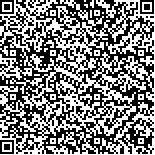下载中心
优秀审稿专家
优秀论文
相关链接
摘要

针对超宽带合成孔径雷达(UWB SAR)工作体制及探测背景的特殊性,结合成像过程,分析了不同分辨率条件下目标与杂波的区别,在此基础上采用了两种形式的一阶自回归(AR)模型实现对多分辨率序列的建模,并提出了广义似然比(GLR)的二维计算方法.该方法大大提高了多分辨率特征提取的稳定性,基于实际UWB SAR图像的试验结果表明:利用多分辨率特征可明显增强图像信杂比,从而提高UWB SAR目标检测效果.
There are many features used to distinguish target from clutter in Synthetic Aperture Radar (SAR) target\ndetection, such as amplitude feature, polarmi etric feature, azmi uthal feature, multi-resolution feature. There are many\nreports about the first three features, but there are very few reports about the developmentofmulti-resolution feature. The\napproaches proposed in concerned references are effective to mi prove the performance ofSAR targetdetection. Butmostof\nthem discuss themulti-resolution feature for targetdetection ofhigh-frequency SAR, so the proposed approaches are com-\nmonly suitable for the targetdetection ofhigh-frequency SAR. Ultra-W ide Band SyntheticAperture Radar (UWB SAR)\ncan be used to detect the concealed targetsbecause itworks at low-frequency, and the corresponding detection background\nis the strong clutterproduced by trunks. The application ofmultiresolution feature inUWB SAR targetdetection are ana-\nlyzed, and the approaches suitable forUWB SAR targetdetection are proposed. In thispaper, we establish the equivalent\nmodels of target and trunk clutter inUWB SAR mi ages according to electromagnetic scattering theorybased on the particu-\nlarity ofUWB SAR operation system. The differences between target and trunk clutter under differentmultiresolution are\nanalyzed from UWB SAR mi age. The analysis supplies a key basis for the extraction ofmultiresolution feature in UWB\nSAR mi ages. Two formsof first-orderAuto-Regression (AR) modelare used to dealwith themultiresolution sequences. In\nthe firstAR mode,l we discuss its statistic distribution of residual to represent the differences between target and trunk\nclutter. In the secondARmode,l we discuss its statistic distribution ofcoefficient to represent the differencesbetween tar-\nget and trunk clutter. In two forms of first-orderARmode,l the corresponding definitions ofGeneralized LikelihoodRatios\n(GLR) are given. The definition of2-D GLR is proposed based on two forms ofAR mode.l The performance of the 2-D\nGLR ismore robust in themultiresolution feature extraction because it integrates two forms of first-orderAR mode.l The\nthree steps of2-D GLR calculation based onUWB SAR mi age are given: 1) generatingmultiresolution mi age sequences,\n2) training statisticmode,l 3) calculating2-D GLR. Themultiresolution feature extraction expermi ent is accomplished in\nan actualUWB SAR mi age for the two 1-D GLRs and the 2-D GLR proposed in this paper. The results of the expermi ent\nshow that themultiresolution features corresponding to the proposed threeGLRs can allbe used to mi prove the signal-clut-\nter ratio (SCR) of the original mi age effectively, and the performance of the 2-D GLR is better than the two 1-D GLRs.

